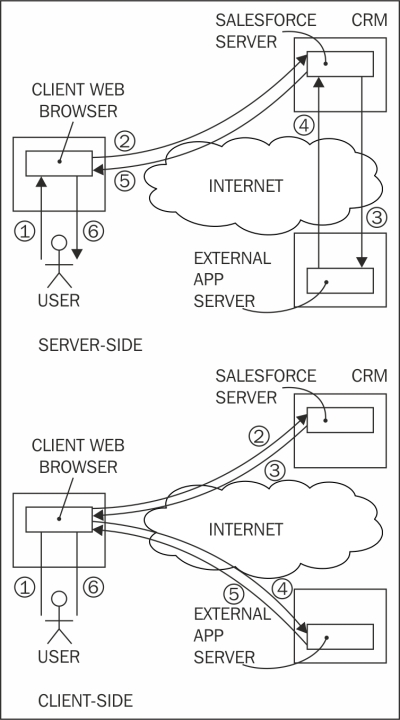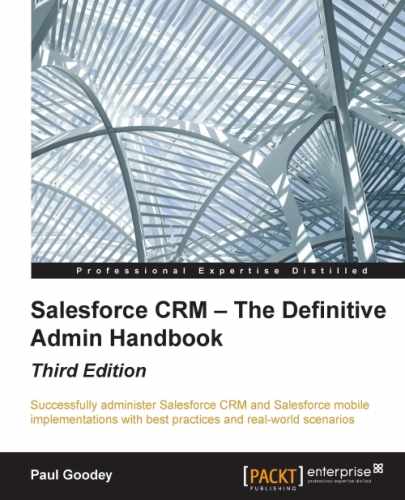Mash-ups in Salesforce CRM might seem daunting at first, especially if you are less familiar with Internet scripting technologies such as HTML, but certain types of mash-up can be accomplished by most people and do not require professional software developers or the IT team.
Note
HTML is the main markup language that creates web pages and other information that can be displayed in a web browser (https://en.wikipedia.org/wiki/HTML).
Before we start out, it is always useful to first evaluate how and where the mash-up needs to be done, and in particular, the type of data and service that is to be mashed up. Once this is understood, you can then begin to consider the coding effort and plan the resources required to implement them.
To understand the flavor of mash-ups as far as Salesforce CRM is concerned, and as suggested, there are two main categories of mash-up development at a high-level, and these can be classed as either server side or client side, as shown in the following diagram:

Looking at the preceding diagram, we see that the server-side mash-up goes through the following high-level steps:
- The user makes a page request to Salesforce CRM using his/her web browser.
- The web browser calls the Salesforce CRM servers, which invoke custom Apex code.
- The custom Apex code in Salesforce CRM calls a function on an external application server.
- The external application returns the response to Salesforce CRM.
- Salesforce CRM processes the response and returns the details to the user's web browser.
- The user's web browser finally presents the overall response to the user.
Client-side mash-ups are far more simple, as they use the browser to link the requests and responses required for the mash-up, where the following typical high-level steps can be considered:
- The user makes a page request to Salesforce CRM using his/her web browser.
- The user's web browser requests details from Salesforce CRM.
- Salesforce CRM returns the response to the user's web browser.
- The user's web browser requests details from the external application.
- The external application returns the response to the user's web browser.
- The user's web browser finally presents the overall response to the user.
As indicated, server-side mash-ups often require sophisticated coding and external infrastructure, which is generally provided by the IT resources. As this book does not aim to be a resource for developers, we will look at server-side technology at a high level but will not go into the details.
We will, however, cover the use and provide some step-by-step instructions on how you can compose client-side mash-ups as well as the tools that are available within your Salesforce CRM application.
